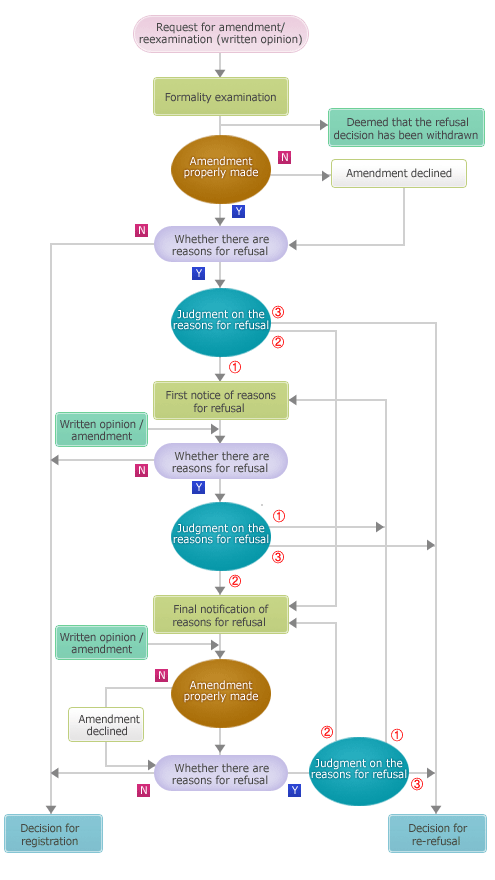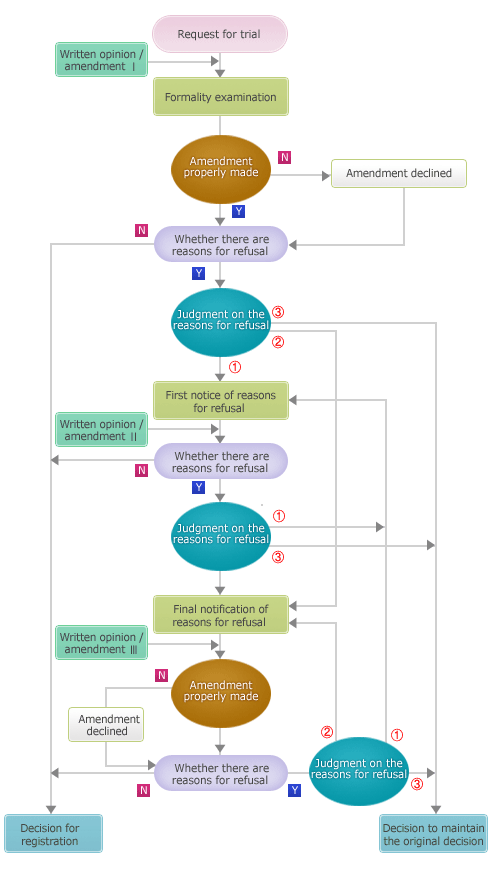Whenever an examiner refuses an application, the applicant can simply request a reexamination after amending the description or drawing(s) . This process is permitted under the revised Patent Act.
Previously, if an application was refused after examination, an applicant had to appeal the examiner's decision of refusal and amend the description or drawing(s) for examination before a trial. On the other hand, according to the revised Patent Act, an applicant does not need to appeal but simply request reexamination with amendment.
Flow chart of a request for reexamination (application filed after July 1, 2009)
①Reasons for refusal from before the date of giving notice of the first refusal, but were not mentioned
②Reasons for refusal which were created by the amendments made after giving notice of refusal, but were not mentioned
③Reasons for refusal mentioned in previous notice of refusal

Flow chart of a reexamination before a trial (for applications filed before June 30, 2009, and after July 1, 2001)
①Reasons for refusal from before the date of giving notice of the first refusal, but were not mentioned
②Reasons for refusal which were created by the amendments made after giving notice of refusal, but were not mentioned
③Reasons for refusal mentioned in previous notice of refusal

댓글
댓글 쓰기